Creating a behind-the-couch table is an excellent way to enhance both the functionality and aesthetic appeal of your living space. This versatile piece of furniture provides a convenient surface for lamps, drinks, books, or decorative items, making it ideal for living rooms where space is at a premium.
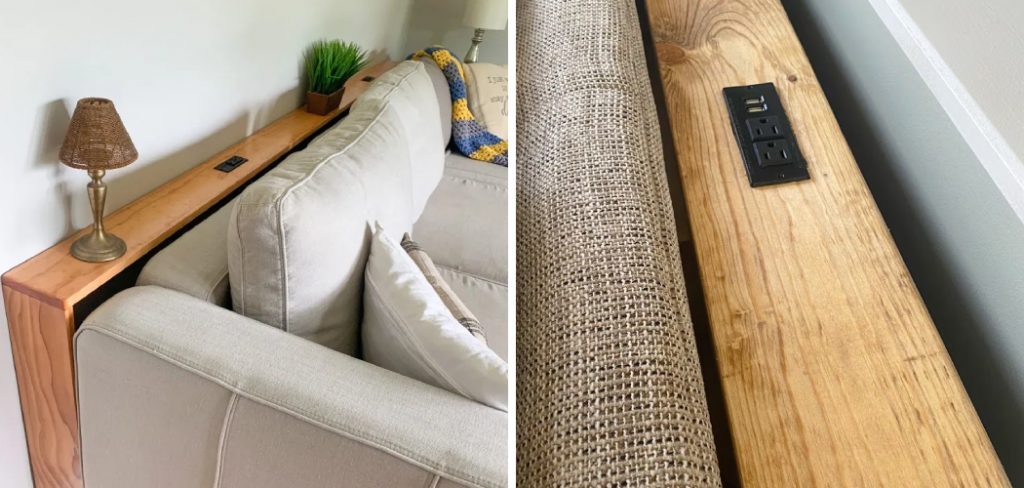
Building a behind-the-couch table is a relatively simple DIY project that can be customized to match your decor and meet your specific needs. This guide will walk you through the entire process of how to make a behind the couch table, from selecting the right materials and tools to detailed construction steps and finishing touches. Whether you prefer a sleek, modern design or a rustic, farmhouse style, you’ll find tips and ideas to tailor your table to fit perfectly with your home’s decor.
By following these instructions, you can create a stylish and practical addition to your living room that not only maximizes space but also adds a unique, personal touch to your home.
Benefits of Having a Behind-the-Couch Table
A behind-the-couch table offers numerous advantages that can greatly enhance your living space. Firstly, it provides additional storage and surface area, allowing you to keep essential items such as remote controls, drinks, and books within easy reach. This can help reduce clutter and keep your living room more organized.
Secondly, it serves as a perfect spot for adding decorative elements, such as lamps, plants, or personal artifacts, thereby elevating the aesthetic appeal of your home. The table also creates a seamless transition between your couch and the rest of the room, contributing to a more cohesive and well-designed space.
Furthermore, for those who live in smaller spaces, a behind-the-couch table maximizes functionality without taking up too much room, making it an ideal solution for space optimization.Overall, this versatile piece of furniture can significantly improve both the practical and visual aspects of your living area.
Understanding the Design
When designing your behind-the-couch table, it’s important to consider both form and function. Start by determining the dimensions that will best suit your space. Measure the height of your couch and decide how high you want the table to be. Typically, a table that aligns with or is slightly lower than the back of the couch works best. Next, consider the depth of the table; it should be deep enough to hold your intended items but not so deep that it becomes obtrusive.
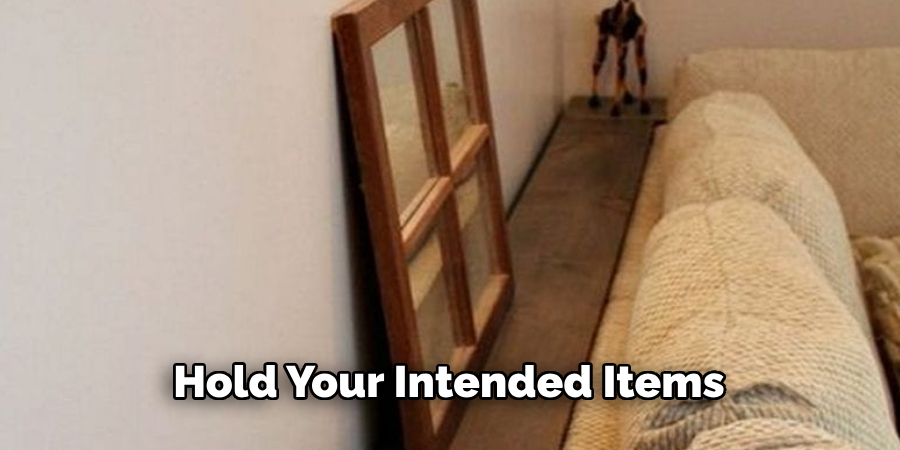
The choice of materials is another crucial aspect of the design process. Common materials include wood, metal, or a combination of both, each offering different aesthetic and functional benefits. For a rustic feel, reclaimed wood can add character and warmth, while metal accents can contribute to a more industrial or modern look.
Lastly, think about the table’s style and finish. Will it have a minimalist, clean design, or will it feature intricate detailing and ornamentation? The finish (e.g., stained wood, painted surfaces) should complement the existing décor of your room, enhancing the overall aesthetic. By carefully planning each element, you can ensure your behind-the-couch table not only serves its purpose but also adds a touch of elegance and personality to your living space.
Different Styles and Designs of Behind-the-Couch Tables
When it comes to behind-the-couch tables, the design possibilities are virtually endless. Here are some popular styles and designs to consider:
Modern Minimalist
Modern minimalist tables are characterized by their clean lines and simple, uncluttered design. Often made from materials like glass, metal, or polished wood, these tables blend seamlessly into contemporary living spaces. A sleek, minimalist table with a neutral color palette can provide a functional surface without overwhelming the room’s visual aesthetics.
Rustic Farmhouse
For a cozy, inviting feel, the rustic farmhouse style is an excellent choice. These tables typically feature reclaimed wood with visible grain and imperfections, adding warmth and character. Often adorned with decorative metal brackets or hardware, rustic tables have a timeless appeal that fits well with both rural and urban decors. A distressed paint finish can further enhance the rustic charm.
Industrial Chic
Industrial chic tables combine raw materials like metal and reclaimed wood to create a rugged, yet stylish look. With their exposed hardware, pipe legs, and steel frames, they bring an urban edge to any living room. This style is perfect for loft apartments or modern homes that embrace an industrial aesthetic.
Mid-Century Modern
Inspired by design trends from the 1950s and 1960s, mid-century modern tables feature tapered legs, organic shapes, and a focus on functionality. Made from a variety of materials, including wood and laminate, these tables often have a warm, natural finish and can serve as a striking focal point in retro-themed or eclectic spaces.
Vintage Victorian
For those who prefer a more ornate and luxurious look, vintage Victorian tables offer intricate detailing and rich finishes. These tables may feature carved legs, decorative accents, and opulent materials like mahogany or walnut. A high-gloss finish or inlaid patterns can add a touch of sophistication to the room.
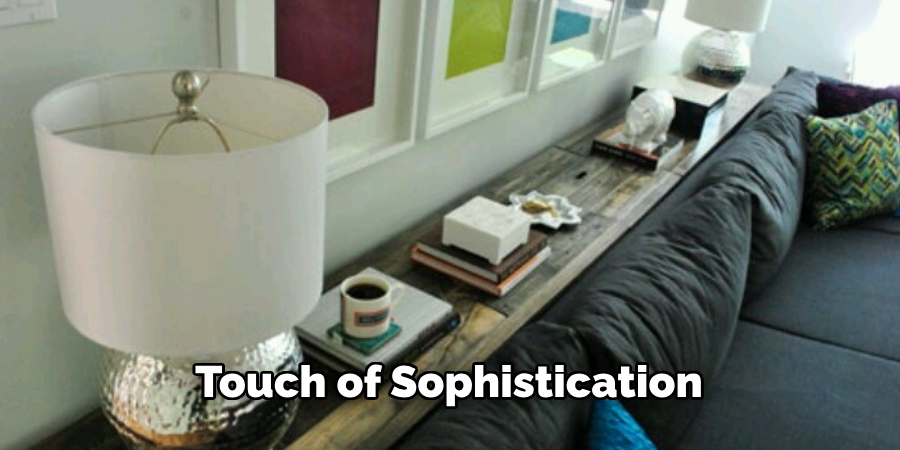
Custom-Built
If you have specific design preferences or unique space requirements, consider a custom-built behind-the-couch table. This option allows you to tailor every aspect of the table—from dimensions and materials to style and finish—ensuring it perfectly matches your décor and functional needs. Whether you’re incorporating hidden storage compartments or specialized surfaces, a custom-built table can be a bespoke addition to your home.
Factors to Consider Before Starting the Project
Before embarking on the project of creating a behind-the-couch table, there are several important factors to consider to ensure a successful outcome.
Space and Measurements
Begin by assessing the available space behind your couch. Accurate measurements are crucial; measure the height, width, and depth of the area to determine the maximum dimensions for your table. Consider how much space you need to leave for walkways and other furniture to prevent overcrowding.
Budget
Establishing a budget is essential for any DIY project. Determine how much you are willing to spend on materials, tools, and any additional fixtures or finishes. This will help guide your choices and prevent overspending. Keep in mind that certain materials or customizations may increase the overall cost.
Materials
The choice of materials greatly influences both the aesthetics and functionality of your table. Decide whether you prefer wood, metal, glass, or a combination of materials based on your existing décor and the table’s intended use. Each material has its own set of benefits and limitations, so consider factors like durability, maintenance, and cost.
Skill Level
Evaluate your own DIY skills honestly. While some may feel comfortable working with power tools and complex construction techniques, others might need to stick to simpler designs. Choose a project that matches your skill level or seek assistance from someone more experienced if necessary.
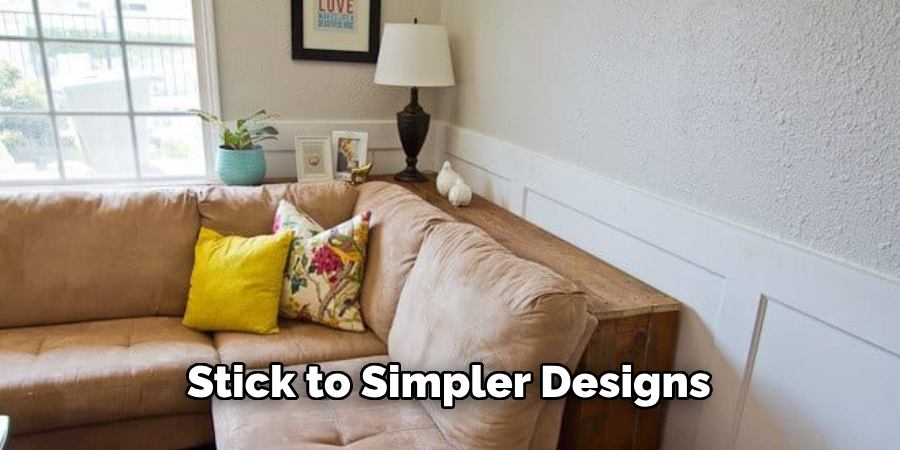
Design and Functionality
Think about what you want your table to achieve. Is it purely decorative, or will it need to support heavy items? Will it include storage features like shelves or drawers? Ensure your design aligns with your functional needs and aesthetic preferences.
Tools and Equipment
Make sure you have access to all the necessary tools and equipment before starting the project. This may include saws, drills, sanders, and measuring tools. If you don’t own these tools, consider renting them or borrowing from a friend.
Safety
Safety should always be a priority. Familiarize yourself with the safety precautions related to the tools and materials you’ll be using. Wear appropriate protective gear, such as gloves, goggles, and ear protection, and ensure your workspace is well-ventilated and clear of hazards.
10 Methods How to Make a behind the Couch Table
Method 1: Designing Your Table
Before you start building, spend some time designing your behind-the-couch table. Measure the height and length of your couch to determine the appropriate dimensions for your table. Decide on the style and function you want—whether you need it for storage, display, or both. Sketch your design, including details like the type of wood, finishes, and any additional features such as shelves or drawers. Having a clear plan will help you stay organized and ensure your table meets your needs.
Method 2: Choosing the Right Materials
Selecting the right materials is crucial for the durability and appearance of your table. Opt for high-quality wood such as pine, oak, or walnut, depending on your budget and desired look. You’ll also need screws, wood glue, sandpaper, a saw, a drill, and finishing materials like paint, stain, or varnish. Ensure you have all the necessary tools and materials before starting your project to avoid interruptions and ensure a smooth building process.
Method 3: Cutting the Wood
Once you have your materials, it’s time to cut the wood to the required dimensions. Use a circular saw or table saw to make precise cuts according to your design. Cut the pieces for the tabletop, legs, and any additional shelves or supports. Label each piece as you cut it to keep track of where it belongs in the assembly process. Accurate cutting is essential for a sturdy and well-fitting table, so take your time to ensure each piece is the correct size.
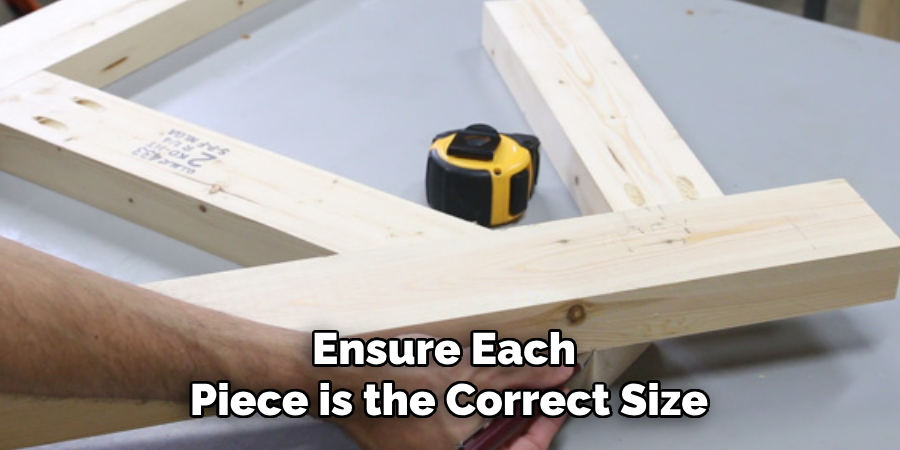
Method 4: Assembling the Tabletop
Start by assembling the tabletop. Arrange the wood pieces for the top according to your design and secure them together with wood glue and clamps. Once the glue is dry, reinforce the joints with screws or dowels for added stability. If your design includes a frame around the tabletop, attach it now using glue and screws. Sand the surface to smooth out any rough edges or imperfections, and wipe away any dust with a damp cloth. A well-constructed tabletop is the centerpiece of your behind-the-couch table.
Method 5: Building the Legs
Next, build the legs for your table. Cut the wood to the desired length for the legs, and sand the edges to smooth them out. If your design includes tapered or angled legs, mark the cuts accordingly and use a miter saw to achieve the correct angles. Attach the legs to the tabletop using screws or brackets, ensuring they are evenly spaced and securely attached. Reinforce the joints with wood glue for added stability. Sturdy legs are essential for a stable and durable table.
Method 6: Adding Shelves or Drawers
If your design includes shelves or drawers, add them now. For shelves, cut the wood to the desired length and width, and attach them to the legs or frame using brackets or screws. Ensure the shelves are level and securely attached. For drawers, build the drawer boxes according to your design and attach them to the table using drawer slides. Ensure the drawers slide smoothly and are properly aligned. Adding shelves or drawers increases the functionality of your table, providing additional storage and display space.
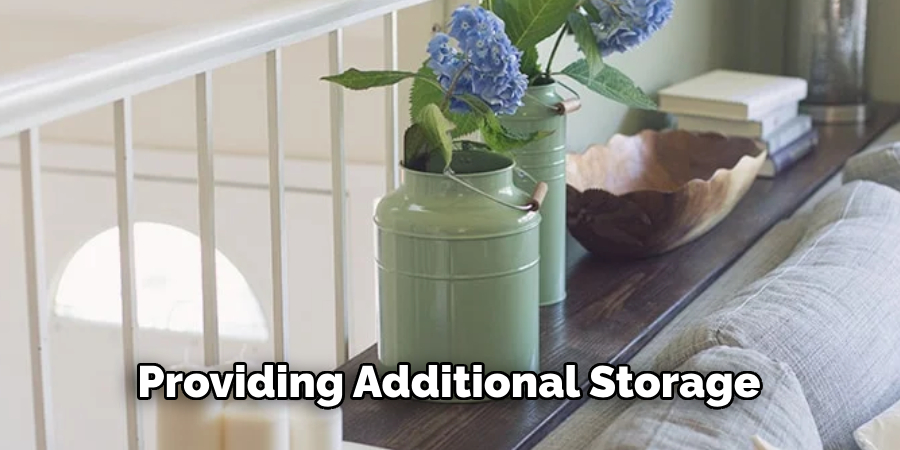
Method 7: Sanding and Finishing
Once the table is fully assembled, sand all surfaces to smooth out any rough edges or imperfections. Start with medium-grit sandpaper and finish with fine-grit sandpaper for a smooth surface. Wipe down the wood with a damp cloth to remove dust. Apply your chosen finish—whether it’s paint, stain, or varnish—using a brush or roller. Follow the manufacturer’s instructions for drying times and apply multiple coats if necessary. Finishing your table enhances its appearance and protects the wood from wear and tear.
Method 8: Adding Decorative Elements
To give your behind-the-couch table a personalized touch, consider adding decorative elements. You can add trim or molding to the edges of the tabletop and legs for a more refined look. Decorative hardware, such as ornate knobs or handles, can enhance the aesthetic appeal. If you’re using paint, consider a two-tone finish or stenciling designs on the tabletop or legs. Adding these decorative elements can elevate the overall design, making your table a unique and stylish piece of furniture.
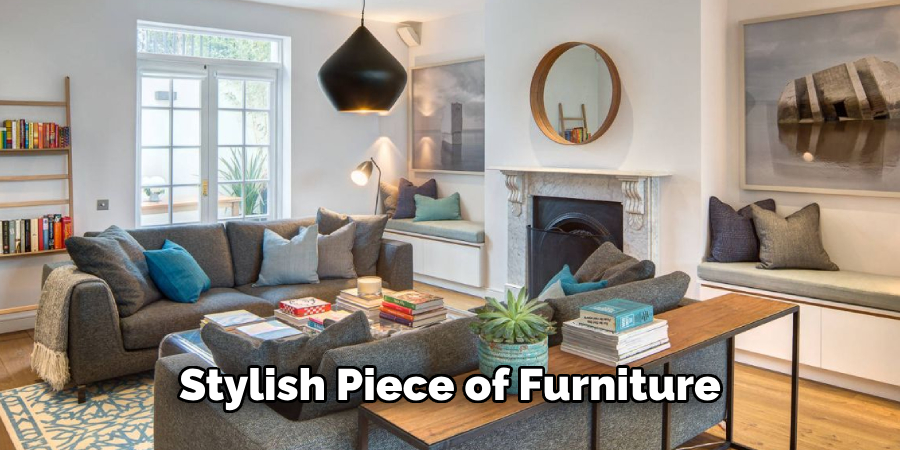
Method 9: Installing Electrical Outlets
For added functionality, consider installing electrical outlets or USB ports in your behind-the-couch table. This can provide convenient access to power for lamps, chargers, or other electronic devices. Choose a location on the table where the outlets will be easily accessible but discreet. Cut holes for the outlets using a hole saw, and install the outlet boxes and wiring according to the manufacturer’s instructions. Ensure all electrical work is done safely and complies with local codes. Adding electrical outlets increases the practicality of your table, making it more versatile and user-friendly.
Method 10: Placing and Using the Table
Once your table is finished and all elements are installed, it’s time to place it behind your couch. Ensure the table is level and stable, and adjust the legs or add felt pads if necessary to protect your floors. Arrange decorative items, lamps, books, or other items on the table to suit your needs and enhance the look of your living space. Take a moment to admire your work and make any final adjustments. Your new behind-the-couch table is now ready to use, providing both style and functionality to your home.
Things to Consider When Building a Behind-the-Couch Table
When embarking on a DIY project to build a behind-the-couch table, there are several important considerations to keep in mind to ensure a successful outcome:
Space and Dimensions
Before you begin, measure the space behind your couch and determine the ideal dimensions for your table. Consider the height, width, and depth to ensure it fits seamlessly into your living space without obstructing movement or access to other furniture.
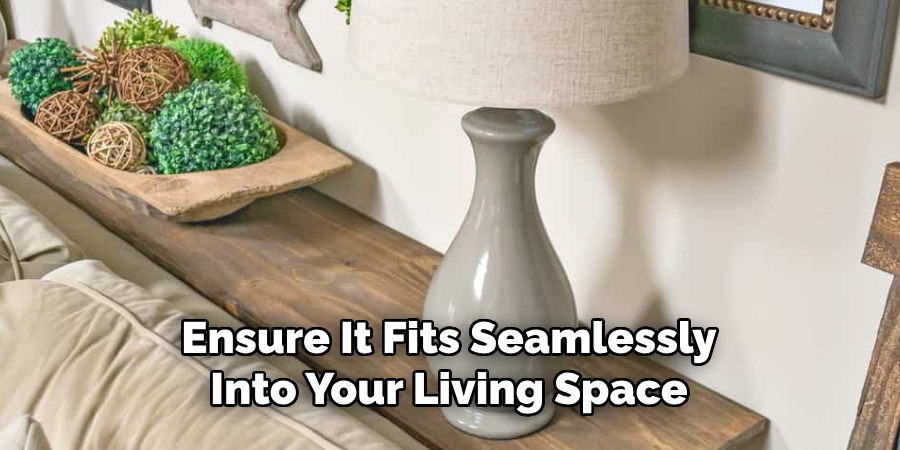
Functionality
Think about how you plan to use the table. Will it primarily serve as a decorative piece, or do you need additional storage? Deciding whether you need shelves, drawers, or electrical outlets will impact your design and material choices.
Style and Aesthetics
Choose a design that complements the existing décor of your living room. Whether your style is modern, rustic, or traditional, it’s important that your new piece of furniture harmonizes with other elements in the room.
Material Quality
Investing in high-quality materials will significantly influence the durability and appearance of your table. Consider the type of wood, finishing products, and hardware to ensure they match your desired look and longevity.
Skill Level
Assess your woodworking skills honestly. Choose a design and complexity level that matches your abilities. If you’re a beginner, start with a simple design to build confidence before tackling more intricate projects.
Conclusion
Building a behind-the-couch table is a rewarding DIY project that combines practicality with creativity. By following these ten elaborated methods, you can create a beautiful and functional piece of furniture that enhances your living space. From designing and choosing materials to cutting, assembling, and finishing, each step requires careful attention to detail and craftsmanship.
With patience and effort, you’ll have a unique table that meets your needs and reflects your personal style. Hopefully, this article gave you some helpful tips about how to make a behind the couch table successfully, so now that you have the proper knowledge on how to get the job done, why not give it a try today?
About the Author
Adrian Green, a lifelong woodworking enthusiast, shares his passion for the craft through The Woodenify Blog. With a foundation built on years of hands-on experience in his father’s woodworking shop, Adrian is dedicated to helping others learn and grow in the world of DIY woodworking. His approach to woodworking combines creativity, practicality, and a deep appreciation for the art of building with your own hands. Through his blog, he inspires individuals of all skill levels to embark on their own woodworking journeys, creating beautiful, functional pieces of furniture and décor.
Professional Focus
- Specializes in DIY woodworking projects, from furniture to home décor.
- Provides step-by-step guides and practical tutorials for woodworkers of all skill levels.
- Dedicated to helping readers build confidence and skill through easy-to-follow instructions and tips.
- Passionate about fostering a community of makers who can share, learn, and grow together.
Education History
- University of Craft and Design – Bachelor of Fine Arts (BFA) in Woodworking and Furniture Design
- Woodworking Apprenticeships – Extensive hands-on training with skilled craftsmen to refine carpentry and furniture making techniques.
- Online Courses & Masterclasses – Continued education in advanced woodworking techniques, design principles, and specialized tools
Expertise:
- DIY woodworking, carpentry, furniture making, and home décor projects.
- Creating accessible tutorials and guides for beginner to advanced woodworkers.
- Sharing the joys and satisfaction of woodworking, from raw materials to finished products.
